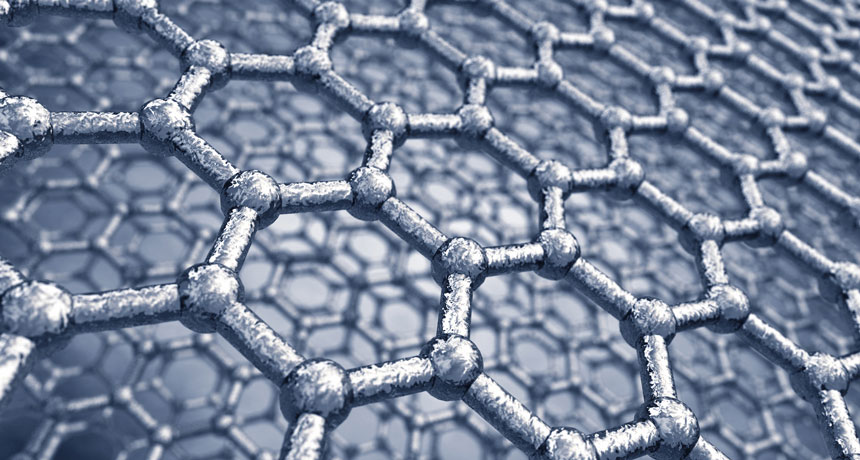New technique shows how 2-D thin films take the heat
Figuring out ways the materials react to higher temps will determine their use in electronics

A HEATED RESPONSE Probing 2-D materials with high-energy particle beams reveals how these superthin films perform when the heat is on.
Nobeastsofierce/Shutterstock
- More than 2 years ago
High-energy particle beams can reveal how 2-D thin sheets behave when the heat is cranked up.
Researchers have devised a way to track how these materials, such as the supermaterial graphene, expand or contract as temperatures rise (SN: 10/3/15, p. 7). This technique, described in the Feb. 2 Physical Review Letters, showed that 2-D semiconductors arranged in single-atom-thick sheets expand more like plastics than metals when heated. Better understanding the high-temp behaviors of these and other 2-D materials could help engineers design sturdy nano-sized electronics.
Commonly used silicon-based electronics are “hitting a brick wall,” regarding how much smaller they can get, says Zlatan Aksamija, an electrical engineer at the University of Massachusetts Amherst not involved in the work. Materials made of ultrathin, 2-D films could be ideal for building the next generation of tinier devices.
But electronics warm up as electric current courses through them. If 2-D materials in a nanodevice expand or shrink at different rates from each other when heated, that could change the device’s electronic properties — such as how well it conducts electricity, says Antoine Reserbat-Plantey, a physicist at the Institute of Photonic Sciences in Barcelona not involved in the research. It’s crucial to know how the thin films react to higher temps.
The new method uses a scanning transmission electron microscope to bombard a film with a beam of high-energy particles. That particle beam stirs up electrons in the 2-D sheet, making the electrons swish back and forth through the material. The collective oscillation, called a plasmon, occurs at a frequency that depends on the material’s density, explains Matthew Mecklenburg, a physicist at the University of Southern California in Los Angeles who was not involved in the work.
The plasmon frequency affects how much energy the particles of the microscope beam lose as they streak through the 2-D material: the higher the frequency, the denser the material, and the more energy that is sapped from the beam. By using another instrument to measure the energies of beam particles after they’ve passed through the 2-D material, researchers can discern the material’s density — and track how that density changes as they turn up the heat.
Robert Klie, a physicist at the University of Illinois at Chicago, and colleagues used this technique on samples of graphene, which is made of carbon atoms, and four 2-D semiconductors made of transition metal and chalcogen atoms. (Chalcogen elements are found in group 16 on the periodic table and include sulfur and selenium). These materials were arranged in sheets from a single atom to a few atoms thick. The team measured the density of each sample at eight temperatures between about 100° and 450° Celsius. That allowed the scientists to calculate how much each material expanded or contracted per degree of temperature increase.
These measurements revealed that the thinnest structures undergo more significant size changes than thicker sheets: A single layer of graphene, which contracts when heated, shrinks more than materials composed of a few graphene layers. The 2-D semiconductors expand at higher temps, but those made of one-atom-thick sheets swell more than semiconductors a few atoms thick. In fact, the heat response of the single-atom-thick semiconductors is “more like [that] of a plastic than a metal,” Mecklenburg says.
This finding may indicate that, like plastics, some 2-D semiconductors have low melting temperatures, which could affect how or whether they’re used in future electronics.







